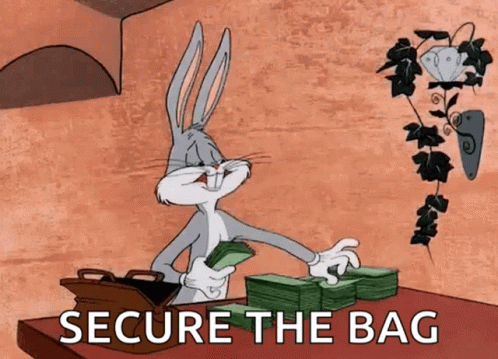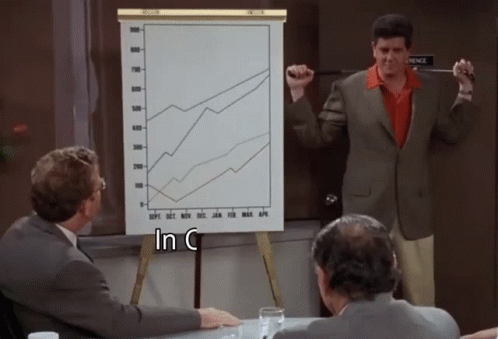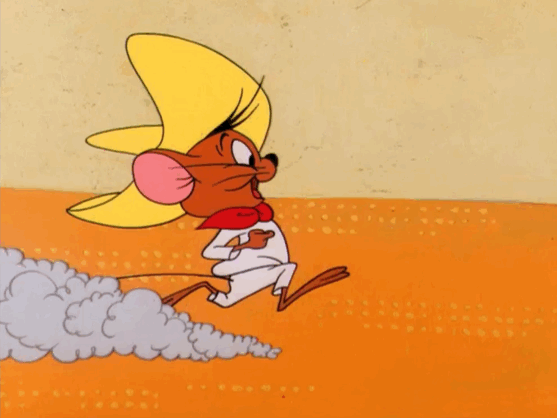What Is Sales Velocity + How to Turbocharge It
What Is Sales Velocity + How to Turbocharge It
What Is Sales Velocity + How to Turbocharge It
Discover what sales velocity is, how to calculate it, and four crucial variables that affect it. Also, explore a fantastic tool to skyrocket sales velocity.
Discover what sales velocity is, how to calculate it, and four crucial variables that affect it. Also, explore a fantastic tool to skyrocket sales velocity.
Discover what sales velocity is, how to calculate it, and four crucial variables that affect it. Also, explore a fantastic tool to skyrocket sales velocity.



Move over Fast and Furious.
It’s time for Fast and Profitable. 💸😎💸

Sales velocity tells you how quickly a deal moves through your sales pipeline and generates revenue! 🚀
In this article, we’ll discuss what sales velocity is, how you can calculate it, the benefits of tracking sales velocity, and the variables that affect the sales metric.
But that’s not all.
We will also introduce a fantastic tool to help you build a sales pipeline of product-qualified leads, boosting your sales velocity and win rates!
Ready? Take off on 3,2,1! 🛫
What Is Sales Velocity?
Sales velocity measures how quickly your business or sales organization converts leads into paying customers.
A high sales velocity indicates a fast pace of revenue growth. The less time it takes for your prospects to move through your pipeline and for your sales reps to close the deal, the higher your sales velocity.
So, a high sales velocity means you’re generating more revenue in less time.
To sum up:
Higher sales velocity = more revenue 🤑

But what affects velocity?
Four Variables That Affect Sales Velocity
Four variables affect your team's sales velocity metric :
Number of opportunities
Average deal size
Win/Conversion rate
Sales cycle length
1. Number of Opportunities
The number of opportunities in sales velocity focuses on the number of qualified leads in your sales pipeline. 🎯
Since the sales velocity metric measures how quickly your deal moves through the sales pipeline, from an opportunity to a closed won deal, a low number of qualified leads can slow you down.
A qualified opportunity matches your ideal customer profile that has shown an interest in your product or service. And they’re the ones you need to focus on. 🛒
The three types of qualified leads are:
A marketing-qualified lead (MQL): A potential prospect who has shown interest in your product and marketing efforts by interacting with your sales team.
A sales-qualified lead (SQL): A prospect who has moved down your sales pipeline and is ready to talk to your sales reps.
A product qualified lead (PQL): A prospect who has experienced first-hand value by using your product via a free plan or trial.
Or you could skip the lesson and simply rely on Toplyne to help you build a smooth sales pipeline of product-qualified leads! 😉
2. Average Deal Size
Great things come in small packages.
As long as their average deal size is robust. 😏
The math is simple. The larger the deal size, the higher your revenue growth.
Here’s how to calculate the average deal size metric:
Average deal size = Sum value of deals in a specific period / Total number of deals
You can boost your average deal size by:
Closing smaller deals first: This makes space for a bigger deal to move through swiftly and reduces the average sales cycle length. Maintaining a balance between a high and low-value deal allows sales reps to manage time and the sales process effectively.
Leveraging upselling and cross-selling: Targeting existing customers with a new deal offering is one of the best practices your sales team can use to boost their average deal size metric. Since customers already trust your brand and know the product, you can offer new customers an additional deal at check-out (at a discounted price).
3. Win Rates / Conversion Rates
Win rate (a.k.a. conversion rate) is the golden star ⭐ on every sales rep’s profile.

Your win rate is a metric that measures the number of sales opportunities that were converted into paying customers or won deals.
Here’s how to calculate your win rate:
Win Rate = Number of closed deals / Total number of opportunities available.
Factors like a slow response rate, poor UX/UI design, lack of proper pricing methods, and inconsistencies in marketing efforts can make it difficult for a sales organization to achieve a high conversion rate.
A low conversion rate indicates you’re unable to convert leads into paying customers — this clogs your sales pipeline and slows down your sales cycle.
Want to boost your win rate? 🤩
Focus on:
Understanding your customers’ pain points by conducting a sales discovery call and highlighting how your product or service can solve their problems. This helps achieve customer success since the first interaction between the sales rep and the prospect is an important step in the sales process.
Providing customers with valuable resources and content for every stage of the customer’s journey in the sales cycle. This way, customers can easily understand how your solution helps them achieve their goals while improving your close rate.
Providing free trials and freemium plans to your customers before offering the deal. This allows them to explore your solution and grasp its value quickly.
Already offer a free trial?
Learn how to calculate AND improve your free trial conversion rate.
4. Sales Cycle Length
One minute, your lead is a young thing, full of life. 🌸
Blink and —

Sales cycle length measures how long it takes for you to close a sale.
It depends on the price, complexity, and various stages of the sales cycle that the lead has to go through to complete the sale. 🪜
And because a sale is best served warm 🥞 here’s what you can do to keep the sales cycle length short and sweet:
Quote the right price early on. Keeping your customers in the dark may only extend the average length of your sales cycle.
Make it easy for prospects to sign contracts from any device. Online contracts can be signed on the go and will reduce the average length of the sales cycle.
Set mutually agreed-upon goals for every sales call. Setting up mutually agreed goals helps you guide the prospect through the conversion process and improve sales effectiveness. This helps both parties avoid confusion and shortens the average sales cycle, which boosts your sales velocity.
So how do these four variables really come together to make or break your sales velocity?
Think of it like this:
When your sales pipeline underperforms on any one of these metrics, it’s like your sales teams are riding a bicycle with a flat tire.
Safe to say you won’t get too far!
Spike these metrics, and you’ll experience the joy of riding the fastest sports bike on an open freeway!
Pure bliss. 😌
Next, we’ll cover the sales velocity equation.
How to Calculate Sales Velocity
Measuring sales velocity is simple.
Just multiply the number of sales opportunities by the average deal size and win rate and divide the result by the length of your sales cycle.

Here’s the sales velocity formula:
Sales velocity = Number of opportunities x Average deal size x Conversion rate / Length of the sales cycle
Let’s understand the sales velocity equation with the help of an example:
Suppose your business has 50 opportunities, an average deal size of $10,000, an average win rate of 25%, and a sales cycle that lasts 60 days.
Using the sales velocity formula, your sales velocity can be calculated as follows:
Sales Velocity = (50 x $10,000 x .25) / 60
= $125000 / 60
= $2083.33
In this sales velocity equation, $2083.33 is the average revenue you can expect to generate every day.
Easy peasy, lemon squeezy!
Now that you know how the sales velocity calculation works, let’s look closely at how your organization can benefit from measuring sales velocity.
Three Biggest Benefits of Tracking Sales Velocity
Here are three note-worthy benefits of measuring sales velocity:
1. Improve the Sales Process
Have you ever been stuck in a deal that just won’t close? 😭

Pulling the trigger on a sales opportunity might take forever if there are roadblocks in your sales funnel.
Fortunately, a low sales velocity may indicate bottlenecks in your sales funnel that is harmful to your sales process and deal closures, such as:
A lack of standardization in the sales process for sales reps
An under-reliance on sales automation
Slow decision-making processes
2. Enhance Sales Rep Performance
Sales leaders can monitor the performance of their sales teams or sales reps by calculating their sales velocity.
A sales rep with poor sales performance can be flagged and trained to improve their negotiation and communication skills, making them pros in no time!
3. Forecast Revenue
Use the sales velocity metric to estimate how much revenue you can generate after every sale. A higher sales velocity means you are generating more revenue in less time. ⏲️
By measuring sales velocity, you’ll know how much revenue your sales team brings in every day, month, or quarter. This can help you re-assess your sales strategies to make future plans about hiring, product rollouts, and marketing strategies.
When a business knows how frequently customers purchase their products, it helps them predict future revenue accurately. This allows them to allocate their budget according to the expected profits or losses. 📈

So, have you taken a look at your sales velocity yet?
Chances are, whatever that number is, it can be improved.
How?
Say hello to Toplyne!💪
How to Skyrocket Your Sales Velocity Using Toplyne
Toplyne is the trusted Harley Davidson to your Evel Knievel!
Its headless sales AI will build a smooth high-functioning sales pipeline of product-qualified leads using automation for your sales team to glide over!
And while they beat their own win rate records, your sales reps can easily spot any expansion opportunities and pump up your net revenue retention (NRR) too!
Oh, and did we mention?
You get all this without any change management or migrating to additional sales CRM software. This is because Toplyne sits snugly inside your existing sales suite!
Race ahead to read the details!
Here’s how companies like Canva and Vercel generate sales pipeline from their self-serve funnel using Toplyne:
Step 1/7: Create monetization playbooks to surface conversion and expansion opportunities (leads most likely to convert to paying customers, and teams most likely to grow into larger teams)

Step 2/7: Choose the right leads to target – users (individual users) or accounts (a group of users with an organization).

Step 3/7: Select the frequency at which you would want leads synced in your GTM apps.

Step 4/7: Define how many leads you want by either the number of leads or your expected win rate, depending on your sales capacity and GTM strategy.

Step 5/7: Build custom segments - Build custom segments based on And/Or logic at the deepest level of sub-properties within your product analytics.

Step 6/7: Validate your GTM strategy - Hold back some users as a control group to test your GTM strategy.

Step 7/7: Sync your product qualified pipeline into your GTM destinations - CRMs, sales & marketing execution tools, and customer engagement platforms.

Close Deals Like a Speedy Gonzales 🏃
In business, being late is as bad as being wrong.
Measuring sales velocity can help you gain valuable insights into your teams' sales performance.
A slow sales velocity can have an irreversible negative effect on your sales effectiveness and long-term product health.
To boost your sales velocity metric, you need to carefully calibrate the number of opportunities, your average deal size, conversion rate, and sales cycle length.
But why work on them individually when you can simply hit up Toplyne for that sweet nitro boost? 🏎️🏍️
Industry leaders like Canva and Grafana have deployed Toplyne to amp up their sales velocity and beat their targets quarter after quarter, becoming a success story!
So what are you waiting for?
Arriba, andale!🚀
Sign up with Toplyne for free today to increase your sales velocity like never before!

Move over Fast and Furious.
It’s time for Fast and Profitable. 💸😎💸

Sales velocity tells you how quickly a deal moves through your sales pipeline and generates revenue! 🚀
In this article, we’ll discuss what sales velocity is, how you can calculate it, the benefits of tracking sales velocity, and the variables that affect the sales metric.
But that’s not all.
We will also introduce a fantastic tool to help you build a sales pipeline of product-qualified leads, boosting your sales velocity and win rates!
Ready? Take off on 3,2,1! 🛫
What Is Sales Velocity?
Sales velocity measures how quickly your business or sales organization converts leads into paying customers.
A high sales velocity indicates a fast pace of revenue growth. The less time it takes for your prospects to move through your pipeline and for your sales reps to close the deal, the higher your sales velocity.
So, a high sales velocity means you’re generating more revenue in less time.
To sum up:
Higher sales velocity = more revenue 🤑

But what affects velocity?
Four Variables That Affect Sales Velocity
Four variables affect your team's sales velocity metric :
Number of opportunities
Average deal size
Win/Conversion rate
Sales cycle length
1. Number of Opportunities
The number of opportunities in sales velocity focuses on the number of qualified leads in your sales pipeline. 🎯
Since the sales velocity metric measures how quickly your deal moves through the sales pipeline, from an opportunity to a closed won deal, a low number of qualified leads can slow you down.
A qualified opportunity matches your ideal customer profile that has shown an interest in your product or service. And they’re the ones you need to focus on. 🛒
The three types of qualified leads are:
A marketing-qualified lead (MQL): A potential prospect who has shown interest in your product and marketing efforts by interacting with your sales team.
A sales-qualified lead (SQL): A prospect who has moved down your sales pipeline and is ready to talk to your sales reps.
A product qualified lead (PQL): A prospect who has experienced first-hand value by using your product via a free plan or trial.
Or you could skip the lesson and simply rely on Toplyne to help you build a smooth sales pipeline of product-qualified leads! 😉
2. Average Deal Size
Great things come in small packages.
As long as their average deal size is robust. 😏
The math is simple. The larger the deal size, the higher your revenue growth.
Here’s how to calculate the average deal size metric:
Average deal size = Sum value of deals in a specific period / Total number of deals
You can boost your average deal size by:
Closing smaller deals first: This makes space for a bigger deal to move through swiftly and reduces the average sales cycle length. Maintaining a balance between a high and low-value deal allows sales reps to manage time and the sales process effectively.
Leveraging upselling and cross-selling: Targeting existing customers with a new deal offering is one of the best practices your sales team can use to boost their average deal size metric. Since customers already trust your brand and know the product, you can offer new customers an additional deal at check-out (at a discounted price).
3. Win Rates / Conversion Rates
Win rate (a.k.a. conversion rate) is the golden star ⭐ on every sales rep’s profile.

Your win rate is a metric that measures the number of sales opportunities that were converted into paying customers or won deals.
Here’s how to calculate your win rate:
Win Rate = Number of closed deals / Total number of opportunities available.
Factors like a slow response rate, poor UX/UI design, lack of proper pricing methods, and inconsistencies in marketing efforts can make it difficult for a sales organization to achieve a high conversion rate.
A low conversion rate indicates you’re unable to convert leads into paying customers — this clogs your sales pipeline and slows down your sales cycle.
Want to boost your win rate? 🤩
Focus on:
Understanding your customers’ pain points by conducting a sales discovery call and highlighting how your product or service can solve their problems. This helps achieve customer success since the first interaction between the sales rep and the prospect is an important step in the sales process.
Providing customers with valuable resources and content for every stage of the customer’s journey in the sales cycle. This way, customers can easily understand how your solution helps them achieve their goals while improving your close rate.
Providing free trials and freemium plans to your customers before offering the deal. This allows them to explore your solution and grasp its value quickly.
Already offer a free trial?
Learn how to calculate AND improve your free trial conversion rate.
4. Sales Cycle Length
One minute, your lead is a young thing, full of life. 🌸
Blink and —

Sales cycle length measures how long it takes for you to close a sale.
It depends on the price, complexity, and various stages of the sales cycle that the lead has to go through to complete the sale. 🪜
And because a sale is best served warm 🥞 here’s what you can do to keep the sales cycle length short and sweet:
Quote the right price early on. Keeping your customers in the dark may only extend the average length of your sales cycle.
Make it easy for prospects to sign contracts from any device. Online contracts can be signed on the go and will reduce the average length of the sales cycle.
Set mutually agreed-upon goals for every sales call. Setting up mutually agreed goals helps you guide the prospect through the conversion process and improve sales effectiveness. This helps both parties avoid confusion and shortens the average sales cycle, which boosts your sales velocity.
So how do these four variables really come together to make or break your sales velocity?
Think of it like this:
When your sales pipeline underperforms on any one of these metrics, it’s like your sales teams are riding a bicycle with a flat tire.
Safe to say you won’t get too far!
Spike these metrics, and you’ll experience the joy of riding the fastest sports bike on an open freeway!
Pure bliss. 😌
Next, we’ll cover the sales velocity equation.
How to Calculate Sales Velocity
Measuring sales velocity is simple.
Just multiply the number of sales opportunities by the average deal size and win rate and divide the result by the length of your sales cycle.

Here’s the sales velocity formula:
Sales velocity = Number of opportunities x Average deal size x Conversion rate / Length of the sales cycle
Let’s understand the sales velocity equation with the help of an example:
Suppose your business has 50 opportunities, an average deal size of $10,000, an average win rate of 25%, and a sales cycle that lasts 60 days.
Using the sales velocity formula, your sales velocity can be calculated as follows:
Sales Velocity = (50 x $10,000 x .25) / 60
= $125000 / 60
= $2083.33
In this sales velocity equation, $2083.33 is the average revenue you can expect to generate every day.
Easy peasy, lemon squeezy!
Now that you know how the sales velocity calculation works, let’s look closely at how your organization can benefit from measuring sales velocity.
Three Biggest Benefits of Tracking Sales Velocity
Here are three note-worthy benefits of measuring sales velocity:
1. Improve the Sales Process
Have you ever been stuck in a deal that just won’t close? 😭

Pulling the trigger on a sales opportunity might take forever if there are roadblocks in your sales funnel.
Fortunately, a low sales velocity may indicate bottlenecks in your sales funnel that is harmful to your sales process and deal closures, such as:
A lack of standardization in the sales process for sales reps
An under-reliance on sales automation
Slow decision-making processes
2. Enhance Sales Rep Performance
Sales leaders can monitor the performance of their sales teams or sales reps by calculating their sales velocity.
A sales rep with poor sales performance can be flagged and trained to improve their negotiation and communication skills, making them pros in no time!
3. Forecast Revenue
Use the sales velocity metric to estimate how much revenue you can generate after every sale. A higher sales velocity means you are generating more revenue in less time. ⏲️
By measuring sales velocity, you’ll know how much revenue your sales team brings in every day, month, or quarter. This can help you re-assess your sales strategies to make future plans about hiring, product rollouts, and marketing strategies.
When a business knows how frequently customers purchase their products, it helps them predict future revenue accurately. This allows them to allocate their budget according to the expected profits or losses. 📈

So, have you taken a look at your sales velocity yet?
Chances are, whatever that number is, it can be improved.
How?
Say hello to Toplyne!💪
How to Skyrocket Your Sales Velocity Using Toplyne
Toplyne is the trusted Harley Davidson to your Evel Knievel!
Its headless sales AI will build a smooth high-functioning sales pipeline of product-qualified leads using automation for your sales team to glide over!
And while they beat their own win rate records, your sales reps can easily spot any expansion opportunities and pump up your net revenue retention (NRR) too!
Oh, and did we mention?
You get all this without any change management or migrating to additional sales CRM software. This is because Toplyne sits snugly inside your existing sales suite!
Race ahead to read the details!
Here’s how companies like Canva and Vercel generate sales pipeline from their self-serve funnel using Toplyne:
Step 1/7: Create monetization playbooks to surface conversion and expansion opportunities (leads most likely to convert to paying customers, and teams most likely to grow into larger teams)

Step 2/7: Choose the right leads to target – users (individual users) or accounts (a group of users with an organization).

Step 3/7: Select the frequency at which you would want leads synced in your GTM apps.

Step 4/7: Define how many leads you want by either the number of leads or your expected win rate, depending on your sales capacity and GTM strategy.

Step 5/7: Build custom segments - Build custom segments based on And/Or logic at the deepest level of sub-properties within your product analytics.

Step 6/7: Validate your GTM strategy - Hold back some users as a control group to test your GTM strategy.

Step 7/7: Sync your product qualified pipeline into your GTM destinations - CRMs, sales & marketing execution tools, and customer engagement platforms.

Close Deals Like a Speedy Gonzales 🏃
In business, being late is as bad as being wrong.
Measuring sales velocity can help you gain valuable insights into your teams' sales performance.
A slow sales velocity can have an irreversible negative effect on your sales effectiveness and long-term product health.
To boost your sales velocity metric, you need to carefully calibrate the number of opportunities, your average deal size, conversion rate, and sales cycle length.
But why work on them individually when you can simply hit up Toplyne for that sweet nitro boost? 🏎️🏍️
Industry leaders like Canva and Grafana have deployed Toplyne to amp up their sales velocity and beat their targets quarter after quarter, becoming a success story!
So what are you waiting for?
Arriba, andale!🚀
Sign up with Toplyne for free today to increase your sales velocity like never before!

Related Articles




Behavioral Retargeting: A Game-Changer in the Cookieless Era
Unlock the power of behavioral retargeting for the cookieless future! Learn how it personalizes ads & boosts conversions. #behavioralretargeting




All of Toplyne's 40+ Badges in the G2 Spring Reports
Our customers awarded us 40+ badges in G2's Summer Report 2024.




Unlocking the Full Potential of Google PMax Campaigns: Mastering Audience Selection to Double Your ROAS
Copyright © Toplyne Labs PTE Ltd. 2024
Copyright © Toplyne Labs PTE Ltd. 2024
Copyright © Toplyne Labs PTE Ltd. 2024
Copyright © Toplyne Labs PTE Ltd. 2024